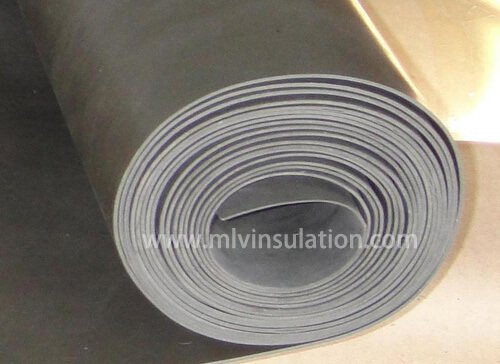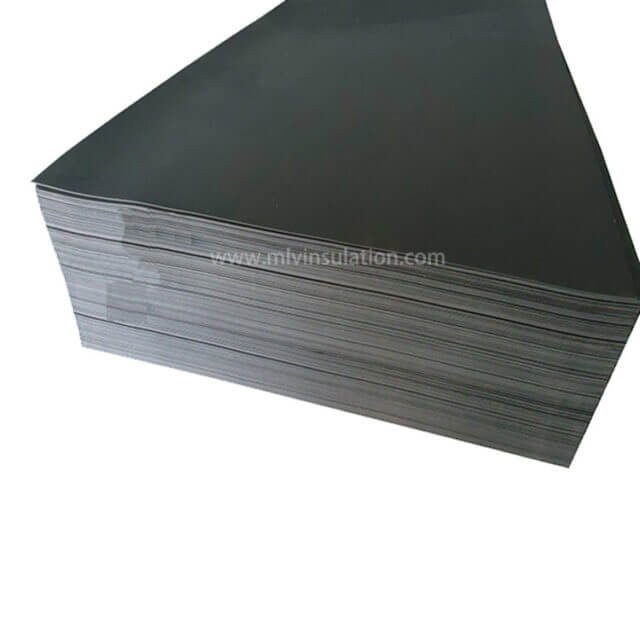I. Introduction
In home theater systems, sound quality can make or break an immersive experience. Not just having top-of-the-line speakers and audio equipment is crucial to creating an ideal acoustic environment; one key aspect that plays an essential part is acoustic insulation.

II. Understanding Acoustic Insulation
To understand the significance of acoustic insulation, it’s necessary to first appreciate its role in soundproofing. Sound waves travel in waves and can easily pass through ordinary walls and ceilings causing unwanted noise leakage that compromises audio experience within home theater systems. Acoustic insulation wall offers protection from this transmission of sound waves through special materials that create barriers against transmission allowing them to pass unimpeded.
Acoustic wall insulation acts as a sound-absorbing barrier, blocking and dampening transmission of sound waves, helping prevent sound from leaving the theater room and keeping out external noise sources from infiltrating into it. By effectively isolating sound within the space, wall acoustic insulation ensures you can fully immerse yourself in audio experience without being distracted from listening by external noise or distractions.
Sound waves that encounter an acoustic insulation material are either absorbed or reflected back, significantly diminishing their intensity and eliminating echos, reverberations and resonance – leading to more balanced and clear sound output from speakers. Furthermore, insulation helps reduce vibrations and impact noise – further improving acoustic environments overall.
Integrating acoustic insulation ceiling into your home theater offers numerous advantages. First, it will improve sound quality by minimizing echo and reverberation – so that every detail is heard clearly – while at the same time keeping sound within its designated theater room preventing disruption elsewhere in your house – particularly useful if there are neighbors or family nearby.
An ideal acoustic environment created using cheap acoustic insulation will not only elevate your home theater experience but also add significant value to your property. Prospective buyers or renters often value homes that feature well-designed soundproofed spaces so they can watch movies or listen to music without disturbing others.

III. Types of Acoustic Insulation
Acoustic insulation materials come in many forms and offer various properties and benefits; here are some commonly used acoustic insulation materials:
1. MLV (Mass Loaded Vinyl):
Noise grabber mass loaded vinyl is an economical and lightweight soundproofing material with excellent soundproofing capabilities and versatility, popularly used to reduce noise transmission in walls, ceilings and floors for effective noise control. Installation and customization of MLV can be accomplished easily making mass noise liner an attractive solution both among homeowners and professionals alike.
Pros:
- Excellent soundproofing capabilities
- Easy to install and customize mass loaded vinyl panels
- Can be used on various surfaces
Cons:
- Requires proper sealing to ensure maximum effectiveness

2. Fiberglass Insulation
Fiberglass insulation is a popular material due to its thermal and acoustic insulation properties, featuring glass fibers which trap air pockets that reduce sound transmission. Fiberglass batts or rolls can be purchased and installed into wall cavities or ceilings for greater sound absorption at an affordable price point.
Pros:
- Good sound absorption properties
- Cost-effective option acoustic insulation in duct
- Widely available acoustic insulation for pipes
Cons:
- Can cause skin irritation if not handled properly
- Requires careful installation to avoid gaps and air leakage
3. Acoustic Foam Panels
Acoustic foam panels are specifically designed to absorb noise. Constructed from open-cell foam that traps sound waves, reducing echo and reverberation and improving acoustics in walls and ceilings alike, these panels allow for creative installations with creative possibilities and customizable installations scuh as acoustic insulation for duct and acoustic pipe insulation.
Pros:
- Versatile and customizable pipe acoustic insulation
- Enhances the aesthetics of the room
Cons:
- Primarily focuses on sound absorption, may not provide sound blocking capabilities
- May require additional materials for complete soundproofing
- Can’t be mass loaded vinyl alternatives

IV. Acoustic Insulation for Walls
Wall insulation is essential in providing optimal soundproofing in a home theater environment. Acoustic insulation walls often serve as the main source of sound transmission, allowing noise to escape or enter through them and cause leakage into rooms around them. By adequately insulating these walls, sound leakage can be greatly reduced while simultaneously improving overall acoustic conditions in your theater space.
There are various techniques and materials available for wall acoustic insulation. Below are a few commonly utilized options:
Double Stud Walls
Double stud walls involve building two layers of wall studs separated by a gap that’s filled with an acoustic insulation material like fiberglass or mineral wool to act as an effective sound barrier, reducing sound transmission through walls. This type of wall design helps create an effective sound barrier by blocking off sound transmission between spaces between them.
Resilient Channels
Resilient channels are metal strips attached to studs prior to installing drywall that help decouple it from its source, thus reducing sound vibrations and improving soundproofing capabilities. When combined with acoustic insulation pad, resilient channels can significantly boost wall’s soundproofing potential.
Acoustic Panels
Acoustic panels are specially-made panels used to absorb sound and reduce echos in rooms, improving sound quality for better audio reproduction in them. You can mount these acoustic panels directly on walls for improved sound quality within any given space. Available in various designs and materials, acoustic panels allow both functional and aesthetic improvements for your home theater setup.
Acoustic insulation system on walls offers many advantages. First, it helps reduce sound leakage from outside sources, keeping audio within its designated cinema room and not disturbing other parts of the house. Furthermore, wall insulation improves room acoustics by decreasing echos and reverberations which provides for a more balanced audio experience overall.

V. Acoustic Insulation for Ceilings
Ceiling insulation is of paramount importance when it comes to soundproofing a home theater. Sound waves travel upwards easily, making the ceiling an entryway for sound leakage or ingress. By properly insulating it, you can further enhance acoustics and create an unforgettable audio experience.
There are various options available to you for providing acoustics and sound insulation on ceilings, depending on your particular needs and requirements. Let’s examine some commonly employed techniques:
- Acoustic Insulation Batt or Roll: Like wall insulation, acoustic insulation batts or rolls can also be installed in ceiling cavities to help absorb sound transmission between floors and reduce sound absorption. These materials, such as fiberglass or mineral wool, offer excellent sound absorption properties that help decrease sound transmission between them – plus, installation is simple with cuts made specifically to fit individual areas of need.
- Acoustic Spray Foam Insulation: Acoustic spray foam insulation is a popular option for ceiling soundproofing. Once applied as a liquid, it expands to fill gaps and crevices to form an airtight and soundproof barrier, helping reduce sound transmission while simultaneously providing thermal insulation benefits.
- Acoustic Ceiling Tiles: Acoustic ceiling tiles are specifically designed to absorb sound and reduce echo effects, providing both soundproofing and aesthetic enhancements for any ceiling surface. With various styles and designs available, you can customize the look of your home theater while simultaneously improving acoustics.
Acoustic insulation for ceilings provides several distinct advantages. First, it helps minimize sound leakage into other rooms of the house by keeping audio confined within its designated home theater room – this can be especially important if there are rooms above or next to your theater room that might otherwise become noisy due to noise disturbance from above or reverberations issues. Furthermore, ceiling insulation improves overall sound quality by decreasing echos and reverberations for a more balanced audio experience.

VI. Identify the Appropriate Acoustic Insulation Products
Selecting appropriate acoustic insulation products is key to creating an effective soundproof environment in your home theater. Here are some tips when selecting insulation:
Density
The density of insulation material has an impactful effect on its ability to absorb noise. High-density materials tend to be more effective at blocking sound transmission; for enhanced soundproofing use insulation products with higher densities.
Thickness
The thickness of the insulation material has an enormous influence on its soundproofing capabilities, as thicker materials tend to provide better absorption and insulation against sound waves. However, when selecting your thickness it is crucial that it fits within available space without negatively affecting other aspects of a room’s design.
Product Quality
To get maximum impact from soundproofing your home theater, choose quality materials cut by acoustic insulation cutting machine from reliable suppliers and manufacturers. These will offer improved performance and long-term effectiveness of soundproofing your theater.
By carefully considering these factors and choosing suitable acoustic insulation suppliers, you can create an optimal acoustic environment in your home theater that enhances overall sound quality while creating an immersive audio experience.

Mass Load Vinyl | Mass Loaded Vinyl Manufacturers
Being a cheap & environmentally friendly insulation material, mass loaded vinyl is the ultimate noise reduction product for residential & commercial buildings.

Mass Loaded Vinyl STC 27 |Thickness 3mm
STC 27 Manufacturer Mass Loaded Vinyl Density Mass Density Vinyl |Mass Loaded Vinyl Thickness 3mm Mass Loaded Vinyl STC Rating 27 High Density Mass-Loaded Vinyl
VII. Additional Soundproofing Measures
Additional soundproofing techniques and products may further improve the acoustics in your home theater, including insulation. Consider taking these measures for maximum soundproofing:
- Soundproof Rubber Rolls: Acoustic insulation pipe rolls, commonly referred to as mass-loaded vinyl (MLV) rolls, can be installed under flooring or carpeting to dampen vibrations and reduce impact noise levels. These rolls add another layer of sound insulation for an immersive audio experience.
- Acoustic Foil Insulation: Acoustic foil insulation is a thin and reflective material designed to block both sound and thermal energy, helping your home theater stay quieter while improving acoustics overall. You can install it on walls, ceilings, or floors for enhanced soundproofing and improved acoustic environments.
- Sealing and Caulking: For effective soundproofing, seal any gaps and cracks in walls, acoustic insulation between joists, ceilings and floors by using sealants or caulk that prevent sound escaping or entering the room through any openings or air leaks that exist in them. Specifically use acoustic sealants or caulk to seal off any potential air leaks which allow sound to either escape from or enter.
- Soundproof Curtains and Drapes: Soundproof curtains or drapes can be used to cover windows and absorb sound reflections, offering additional sound insulation by covering windows with dense noise-absorbent materials that absorb sound echoes.
By combining additional soundproofing measures with acoustic insulation, you can create an optimal home theater acoustic environment ensuring premium audio quality with minimal disturbance from outside noise sources.

Self Adhesive MLV | Mass Loaded Vinyl
Mass Loaded Vinyl Manufacturer Installing MLV Wall Sheets | Mass Loaded Vinyl Adhesive MLV Installation MLV Sheet China Wholesale

Mass Loaded Vinyl Installation | How to Hang Mass Loaded Vinyl
Mass Loaded Vinyl 3mm Mass Loaded Vinyl Under Carpet |How to Hang Mass Loaded Vinyl on Wall Install Mass Loaded Vinyl for Ceiling
VIII. Conclusion
Acoustic insulation plays a crucial role in creating the ideal acoustic environment for home theater viewing. By effectively reducing sound transmission and noise leakage, acoustic insulation wall allows you to immerse yourself fully into your audio experience without distraction or disturbances.
We explored various acoustic insulation materials and techniques, the importance of choosing suitable wall and ceiling insulation materials and products, and soundproofing measures such as soundproof rubber rolls, sound proofing membranes, and acoustic foil insulation as complementary soundproofing measures.
Acoustical wall insulation for your home theater not only elevates the entertainment experience but can add considerable value to your property. Potential buyers or renters often appreciate homes featuring soundproofed spaces that create the optimal acoustic environment.
No matter if it’s a new build or upgrade, don’t overlook the significance of acoustic insulation walls when designing or renovating a home theater. Take the time to choose appropriate materials and soundproofing measures for optimal results – creating an acoustic environment will elevate the experience!
Stay mindful that creating the ideal acoustic environment begins with insulation. Get ready to experience movies, music and immersive audio content to the maximum!









